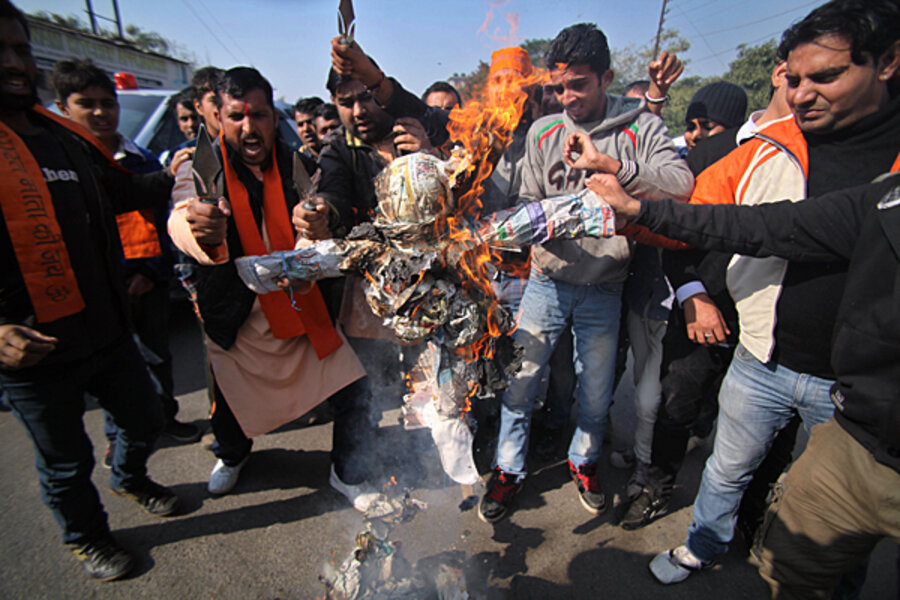Can India and Pakistan ease tensions after recent flareup?
Loading...
| New Delhi
Tensions between nuclear-armed rivals India and Pakistan increased Thursday as Pakistan reported that another one of its soldiers was killed by Indian troops. This is the fourth death reported in the past five days along the along the 415-mile long Line of Control (LoC) that divides the disputed Jammu and Kashmir region between the two countries.
Kashmir has been a major flashpoint between India and Pakistan for more than 60 years. In 2003, India and Pakistan signed a cease-fire agreement, but analysts worry the latest flareup could quickly develop into the worst crisis in relations since the Mumbai attacks of 2008 sent relations into a deep chill.
"This has been the historical trend: that whenever India and Pakistan move toward peace, one small incident reverses all progress made by the dialogue process," says Raza Rumi of the Pakistani think tank The Jinnah Institute. "The blame game by the two countries has been aggravated by the sensationalism of the Indian media, and the Pakistani media could now follow suit," he says.
Immediately following the incidents, the Indian media lit up with heated reports of accusations against Pakistan, including reports of the beheadings of soldiers.
But analysts noted a change in tone in two reports in the Indian media on Thursday, which both appeared to blame India, not Pakistan, for the skirmish. Analysts see this as the Indian establishment’s way of backing down from heated rhetoric earlier this week.
A report in The Hindu newspaper indicated that the border skirmish was actually part of something that had been simmering for a while. A grandmother had managed in September to cross the LoC to be with her family, alarming Indian soldiers so much they built observation bunkers to monitor villager movement.
“The construction work — barred by the terms of the Line of Control ceasefire which India and Pakistan agreed on in 2003 — provoked furious protests from Pakistani troops. Indian commanders, the military source said, conceded that the construction was in violation of the ceasefire.”
And the DNA newspaper reported that it may have been an Indian commander’s excessive response to the crossing of the LoC on Sunday by Pakistani troops that caused the Pakistani retaliation.
Pakistan Foreign Minister Hina Rabbani Khar said, “I hope both the countries will show their commitment to correct [the situation] as we are showing our commitment to correct."
Still, India has rejected Pakistan’s offer of a United Nations investigation, in keeping with the Indian position of not involving a third party in the Kashmir dispute.
Pakistani military commentator Ayesha Siddiqa says that the response in the Indian media to the skirmish on the LoC suggested "somebody wants to negatively impact the peace process."
Indian Home Minister Sushil Kumar Shinde said India had intelligence that Hafiz Saeed, chief of the Lashkar-e-Taiba militant group that India blames for the Mumbai attacks, had recently visited the areas near the LoC “and talked to some people,” suggesting the attacks may have been carried out by non-state actors.
Although the details are still murky, Sushobha Bharve of the Delhi-based Centre for Dialogue and Reconciliation says the people living in the border region are the most concerned.
"My team has visited the LoC areas and found that the people there are very scared of the escalating situation. The peace that has held there since 2003 is dear to them," she says.







